Breakfast Meats: What's Best for Your Health and Blood Sugar?

Key Takeways
What breakfast foods do you love? The perfect morning meal is different for everyone but typically involves a few staples.
You can pick between sausage patties, breakfast sausage, scrambled eggs, omelets, breakfast sandwiches, Greek yogurt, breakfast cereal... the list is endless. For others, the first meal of the day involves a combination of all these breakfast foods.
A healthy morning meal can help you break your overnight fast appropriately, providing your body energy to carry you through until lunchtime. But what should you have for breakfast? A healthy breakfast can mean different things depending on your health goals, food tolerances, and dietary preferences.
If you like your breakfast meats, here’s some good news for you—some can be a great source of protein. But as with any food, the health benefits of a high-protein breakfast, and more specifically, breakfast meats, depends on how your body responds.
Read on to see why protein is a vital part of a healthy, balanced diet and how different breakfast meats add up.
Balanced Breakfasts are Healthy Breakfasts

It’s not surprising that a balanced breakfast is the best option. When you’re scrambling for breakfast ideas, consider a combination of healthy fats, fiber, and protein. It will help keep you full for longer.
Unrefined carbs like whole grains can also be a good source of energy. If you’re having trouble figuring out the proper breakfast for your needs, consider consulting a nutritionist or registered dietitian.
Why Adding Protein to Your Morning Meal is Important

Let’s focus on one of the most important aspects of any healthy eating plan—protein. Proteins are chains of amino acids, organic compounds that your body uses for different functions.
Incorporating protein into your diet can help to manage your blood sugar levels. Protein helps make you feel full, often reducing cravings for foods filled with added sugar and refined carbs. Including a variety of high-protein foods in your diet is the best way to ensure you get the nutrients your body needs.
Protein is also essential for growth and development, repairing muscles and tissue, and maintaining a healthy immune system. You'll find protein in animal and plant foods, so there are plenty of options for people who want to include it in their diets.
While it’s essential for everyone, it may be especially beneficial for athletes, pregnant women, and those focusing on weight loss or muscle building.
{{rich-text-cta-cgm1="/style-guide"}}
Some Common Sources of Protein at Breakfast
When you start your day with protein, you're providing your body with the nutrients it needs to function optimally. While eggs are a great source of protein in the morning, there are many different sources you can pick.
But while some breakfast meats are a great source of protein, they're not all great choices for metabolic health. Some breakfast meats can contain hidden added sugars. Many are highly processed, which may not be the best option for overall health.
Here are some of the most common breakfast meats, their effect on your blood glucose levels, and some nutritional information about each one:
Pork Bacon
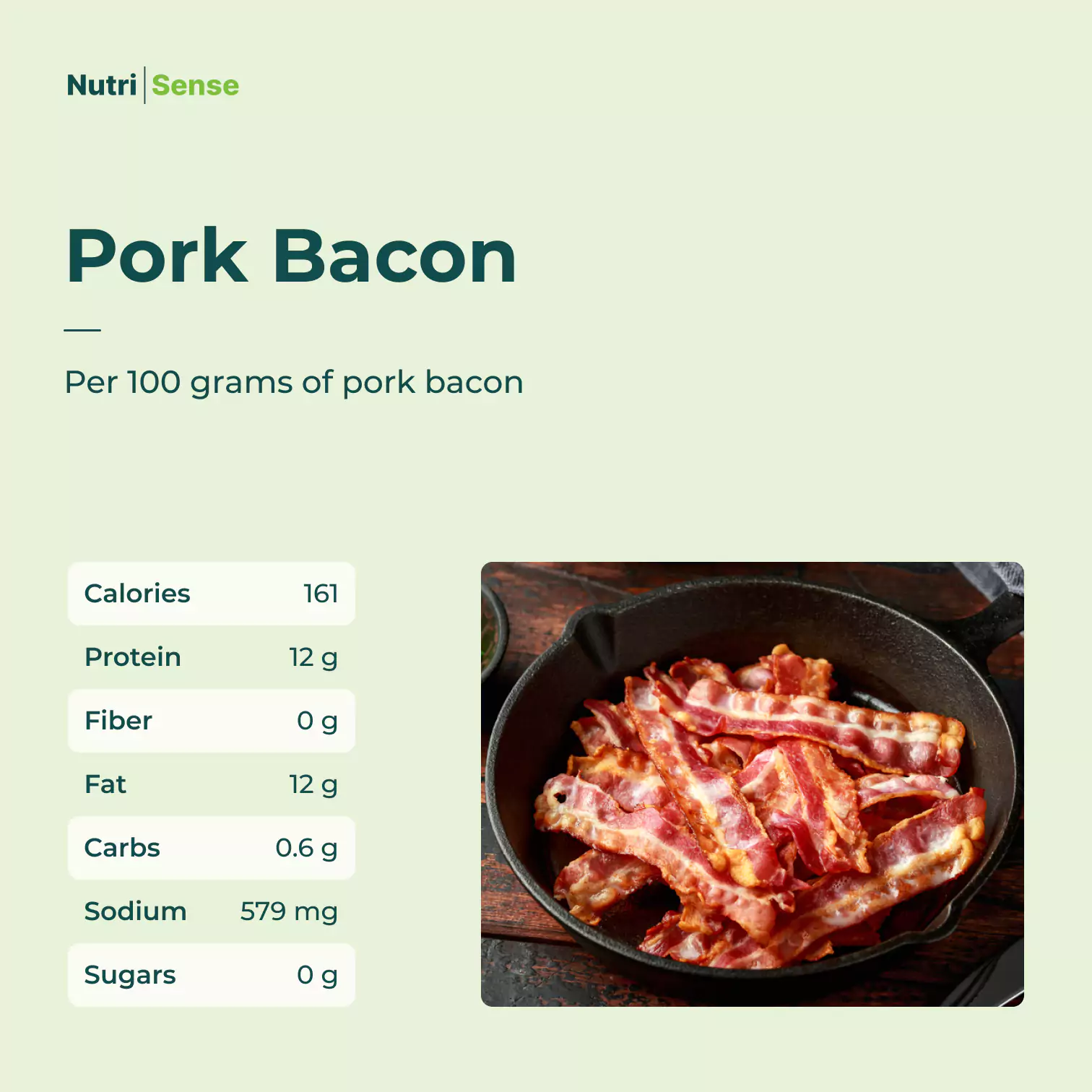
Who doesn’t love this delicious food? People love bacon so much there’s even a camp dedicated to it! Pork bacon is an excellent source of protein, and it doesn't have a lot of carbs. Pork bacon may even help regulate your blood glucose levels if you meal sequence and consume it before including any carbs in your breakfast.
Bacon has approximately 12 grams of protein per 100 grams and contains vitamin B, selenium, and zinc. The meat has a high-fat content and is made by soaking the meat in a mixture of salt, sugar, and nitrates. Bacon can be extremely salty, so salt-sensitive individuals or those on a salt-restricted diet may need to consider the sodium content.
Bacon is low in carbohydrates and sugar (unless you pick a glazed or sugar-seasoned option), so there's a good chance it won't cause your glucose levels to spike! Because bacon is high in fat, it can slow digestion and glucose metabolism, resulting in a blunted glucose spike.
Turkey Bacon
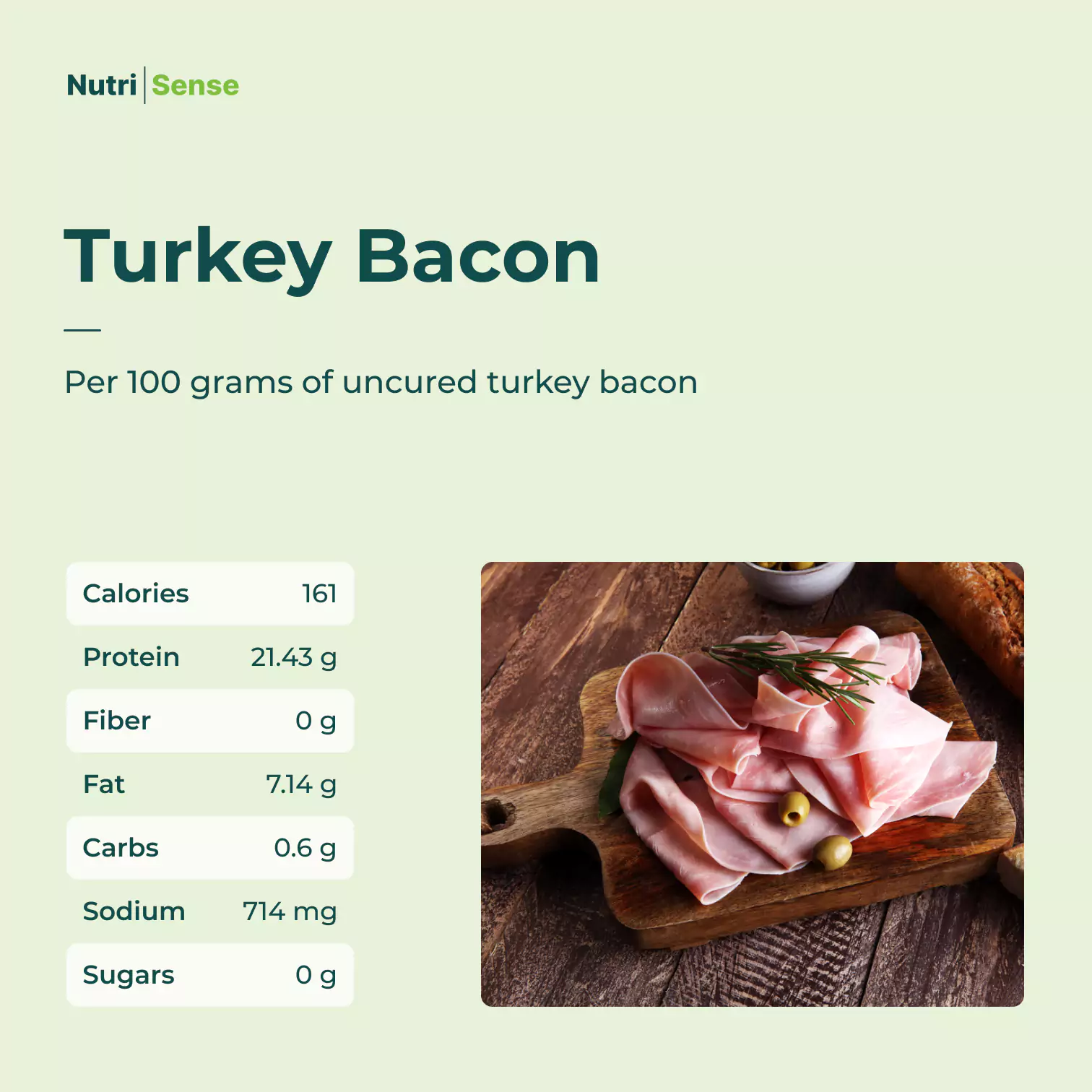
When people think of bacon, they usually think of pork bacon. However, another type of bacon has been growing in popularity over the past few years: turkey bacon.
Turkey bacon is a lighter, lower-fat alternative to pork bacon. It has less fat and calories and contains approximately 21.43 grams of protein per serving. It's a lean protein and is low in carbohydrates, so it often produces a minimal impact on blood sugar.
Turkey bacon can also be high in salt, but there are low sodium alternatives. This breakfast meat is an excellent alternative to pork bacon for anyone looking to cut out a few calories but still wanting to incorporate animal protein into their breakfast.
Canadian Bacon
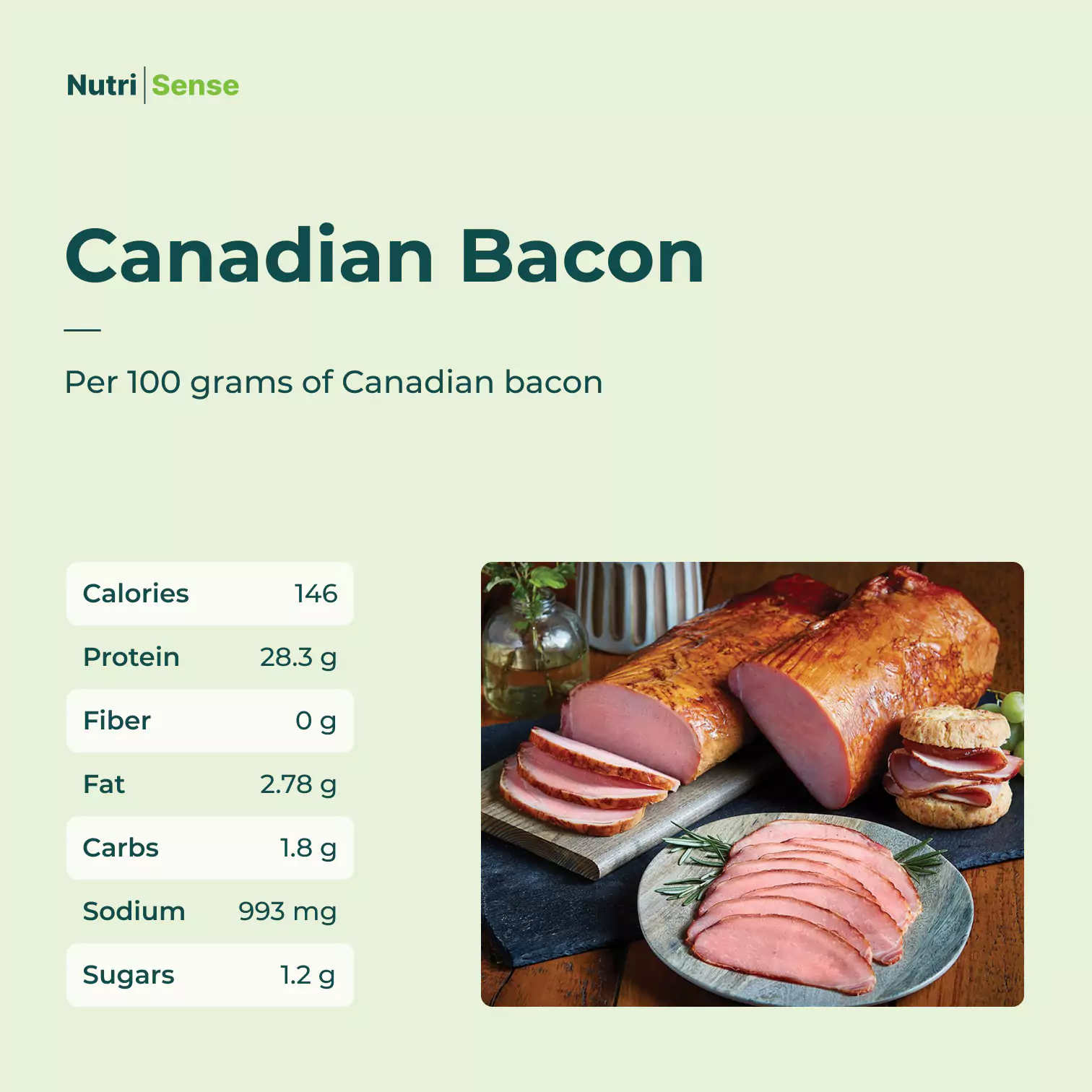
The mention of Canadian bacon is enough to make mouths water. This type of bacon is delicious, but is it healthy? Let's take a closer look at the nutritional value of Canadian bacon and find out.
Spoiler alert: it’s a pretty lean choice! Canadian bacon contains approximately 28.3 grams of protein per 100 grams. It is low in carbohydrates and is safe for anyone looking to add meat to their breakfast without affecting their blood glucose.
The term Canadian bacon is a bit of a misnomer. In reality, Canadian bacon is more similar to ham than traditional bacon. It’s leaner and healthier, and it has a delicious, smoky flavor.
This results in leaner meat with lower levels of fat and calories. In addition, Canadian bacon contains high levels of protein and minerals like zinc and phosphorus.
Canadian bacon is a processed food, so it may not be the best idea to incorporate it into your daily diet. But it is a safe option if you want to switch things up in the mornings while keeping your blood glucose trends level.
Ham Steak

Ham steak is a type of meat that is cut from the leg of a pig. It’s popular worldwide and made by curing pork meat with salt and smoking it. It contains 14.29 grams of protein, can be an excellent low-fat option, and has essential vitamins and minerals like zinc, vitamin C, and selenium.
Ham steak also contains a variety of nutritional benefits. It’s low in fat as well as cholesterol and can be cooked in a variety of ways, making it a versatile meal option. Due to its lean protein content, it can be a blood glucose-friendly breakfast option. Lean protein is a good way to balance any carbohydrates and sugars in your diet.
Breakfast Sausage
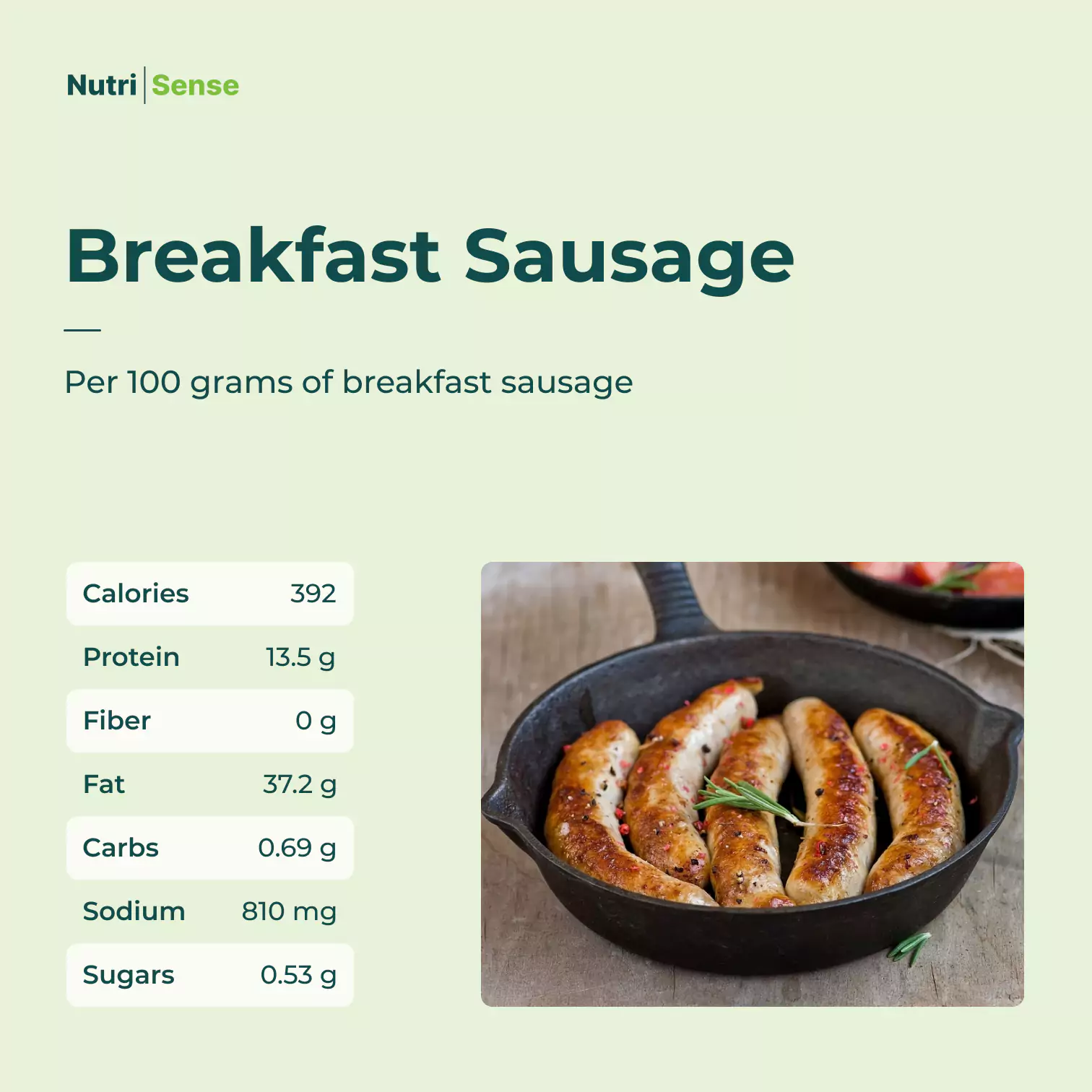
Sausages are processed meat typically made from pork, beef, or turkey. Breakfast sausages, in particular, are often seasoned and/or cured and then stuffed into a casing to form a link or made into patties.
It's no secret that these are high-fat, high-calorie foods. But what you may not know is that many types of sausage are also loaded with sodium. Some also have added sugars and carbohydrates.
If you have diabetes or are watching your blood sugar levels, breakfast sausage may not be the best choice. So, you will need to read the nutritional facts labels carefully to know how much the sausage you choose could impact your blood glucose levels.
Maple Sausage
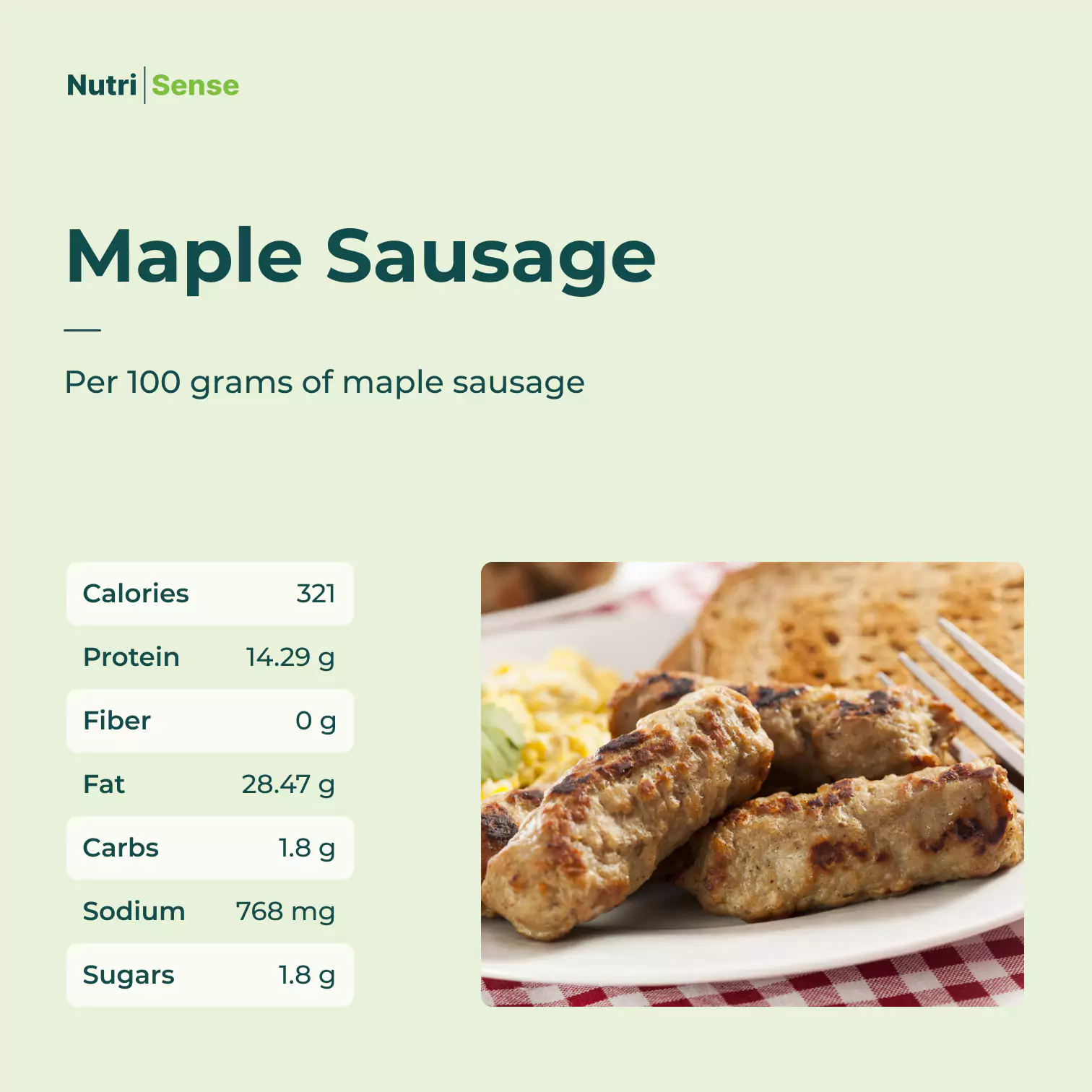
Maple sausages are higher in sugar and fat and don’t provide much nutritional value. They’re more of a processed meat than other options and may even contain some preservatives.
With a whopping 768 milligrams of sodium per 100 grams, it’s safe to say this is a high-salt option. Remember, the recommended daily limit for salt is 2300 milligrams. So, if you're looking for a healthy breakfast option that’s better for your blood glucose levels, consider moderating your intake of this variety.
Corned Beef Hash

Corned beef hash is a popular breakfast dish made with corned beef and potatoes, served as a standalone meal or as part of a larger breakfast spread. If made from scratch, you can control some of the sodium and nutrient content, but canned corned beef hash can be high in fats, and calories, with a whopping 972 grams of sodium.
Corned beef also contains a significant amount of carbohydrates (from potatoes), which can lead to more substantial blood sugar responses. It does have a good amount of protein to help blunt a glucose spike, so the response may be very individual from person to person.
This breakfast meat may be delicious, but if you struggle with controlling your blood sugar levels, this may be best served in moderation or made from scratch to control the carbohydrate content yourself.
Lox

Lox, also known as smoked salmon, is not really ‘meat,’ but we’re such big fans we’re going to sneak it onto the list here. It’s made with raw salmon filets brined in salt and spices, then cold smoked.
It has a salty, smoky flavor and is often eaten on bagels with cream cheese. Lox is a great choice for those with diabetes because of the omega-3s, healthy fats, and the lack of carbohydrates.
Lox is high in protein and omega-3 fatty acids, making it a healthy choice for breakfast or lunch. But you may want to consider skipping the bagel and cream cheese if you’re eating it regularly. Lox can be a delicious addition to omelets, scrambles, or poached eggs instead.
The Verdict
Which type of breakfast meat should you pick from this list? Here’s the verdict from dietitian and Nutrition Manager at Nutrisense, Carlee Hayes:
“When it comes to breakfast, protein is important! If you're planning your breakfasts or any meal for that matter, I always think of it in three main categories: nutrient density, variety, and fun! Aim to make 80 percent of your diet those nutrient-dense foods that nourish your body.
Sprinkle in other proteins, like cottage cheese, tempeh, nut butter, and good quality meats for variety. Then, fill in the rest with fun foods. That means there's room for sausage, bacon, and corned beef hash from this list.
Adding in these foods can help keep you excited about your diet, making those nourishing foods feel less like a chore. Mix it up, have fun with it, and eat your protein first to keep your blood sugar stable.”
Many Other Breakfast Foods Can be a Good Source of Protein

It's important to start your day with a healthy breakfast, and there are plenty of breakfast foods that are good for you and your glucose levels. Many breakfast foods are both high in protein and low in glucose.
If none of the options on this list are for you, don't worry. There are other ways to ensure you’re getting enough high-protein foods in your diet. Other high-protein foods you can start your day with include eggs, tempeh, chia seeds, nut butter, beans, greek yogurt, and cottage cheese.
Watch this space for more high-protein breakfast options and some healthy foods you can add to your morning meal to control and regulate your blood sugar.
Find the right Nutrisense programto turn insight into progress.
Go Beyond Glucose Data with Nutrisense
Your glucose can significantly impact how your body feels and functions. That’s why stable levels are an important factor in supporting overall wellbeing. But viewing glucose isn't enough. Nutrisense, you’ll be able to learn how to use your body's data to make informed lifestyle choices that support healthy living.
One-to-one coaching
Sign up to access insurance-covered video calls to work with a glucose expert: a personal registered dietitian or certified nutritionist who will help tailor your lifestyle and diet to your goals.
Monitor and measure what matters
With the Nutrisense CGM Program, you can monitor your glucose with health tech like glucose biosensors and continuous glucose monitor (CGM)s, and analyze the trends over time with the Nutrisense App. This will help you make the most informed choices about the foods you consume and their impact on your health.
Find your best fit
Ready to take the first step? Start with our quiz to find the right Nutrisense program to help you take control.

Carlee's training at Western Illinois University and an internship at the Memphis VA Hospital lead her to a career in outpatient counseling and bariatric nutrition therapy. In these positions, Carlee realized many of the disease states (upwards of 80%!) her patients experienced were actually preventable. She knew she had to dig deeper into preventative health and has since been passionate about helping people translate this complex glucose data into actionable changes anyone can implement into their everyday lives.




